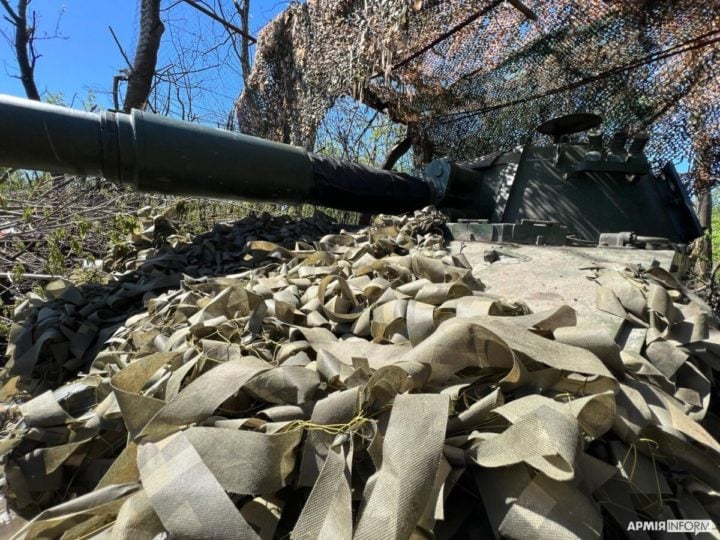The ZALA Lancet drones are one of the most successful Russian weapons in the war against Ukraine. It is a type of loitering munition with a range of around 40 km. Lancet drones have been a real problem for the defenders of Ukraine. However, the stupid Lancet was also a bit of an inspiration – Ukraine will produce their own version of this drone.

Ukrainian self-propelled howitzer M109, covered with anti-Lancet mesh armour. Image credit: Armyinform.com.ua via Wikimedia (CC BY 4.0)
The war in Ukraine is the first armed conflict of this magnitude where unmanned aerial vehicles are employed to this degree. They are everywhere, used by both sides in a wide variety of ways. Small drones are conducting battlefield surveillance, but they can also drop grenades deep into enemy trenches.
Some larger drones are powerful enough to carry mortar bombs or even anti-tank landmines, capable of taking out even modern armour. And then there is a huge variety of so-called FPV drones – small drones that perform kamikaze missions, carrying explosive charges.
The Lancet is different in a way that it has a rather long range of 40 km. Most Ukrainian drones stay in a range of around 5 kilometres and even the more advanced ones don’t go as far as 20 km. This, of course, does not account for the very largest drones that are venturing into Russia and flying for hundreds of kilometres – those aircraft are a different story. Ukraine doesn’t make anything similar to the Lancet, but it is about to change.
Mass production of drones with a range of 40 km, similar to the Russian Lancet, will soon begin in Ukraine, the Minister of Digital Transformation of Ukraine, Mykhailo Fedorov, announced. The government is likely to award a contract to manufacture these drones in the coming weeks, he said. He explained that Ukraine currently produces enough drones with a range of up to 20 km. But the military also needs longer-range kamikaze drones.
“Drones like the Lancet are quite high-tech, and it took us six months to encourage the market in this direction,” Fedorov said.
The Lancet is considered one of the most effective weapons that Russia has used in Ukraine since 2023. In the grand scheme of things, it does not score the most kills – not even close. However, the defenders of Ukraine consider it particularly effective, because if the Lancet goes hunting, it will probably get something. It is quite small, difficult to shoot down and once it’s diving towards something, it will probably hit it. Lancets have destroyed Ukrainian tanks, self-propelled howitzers, towed pieces of artillery, boats, armoured personnel transporters.
Hopefully, the Ukrainian version of the 40 km loitering munition will be even more effective. During these years of war, Ukraine managed to create a large UAV industry and it will continue to grow for the time being.
Written by Povilas M.
Sources: NV.ua, Wikipedia
 Unmanned Aerial Vehicle The latest drone news
Unmanned Aerial Vehicle The latest drone news



